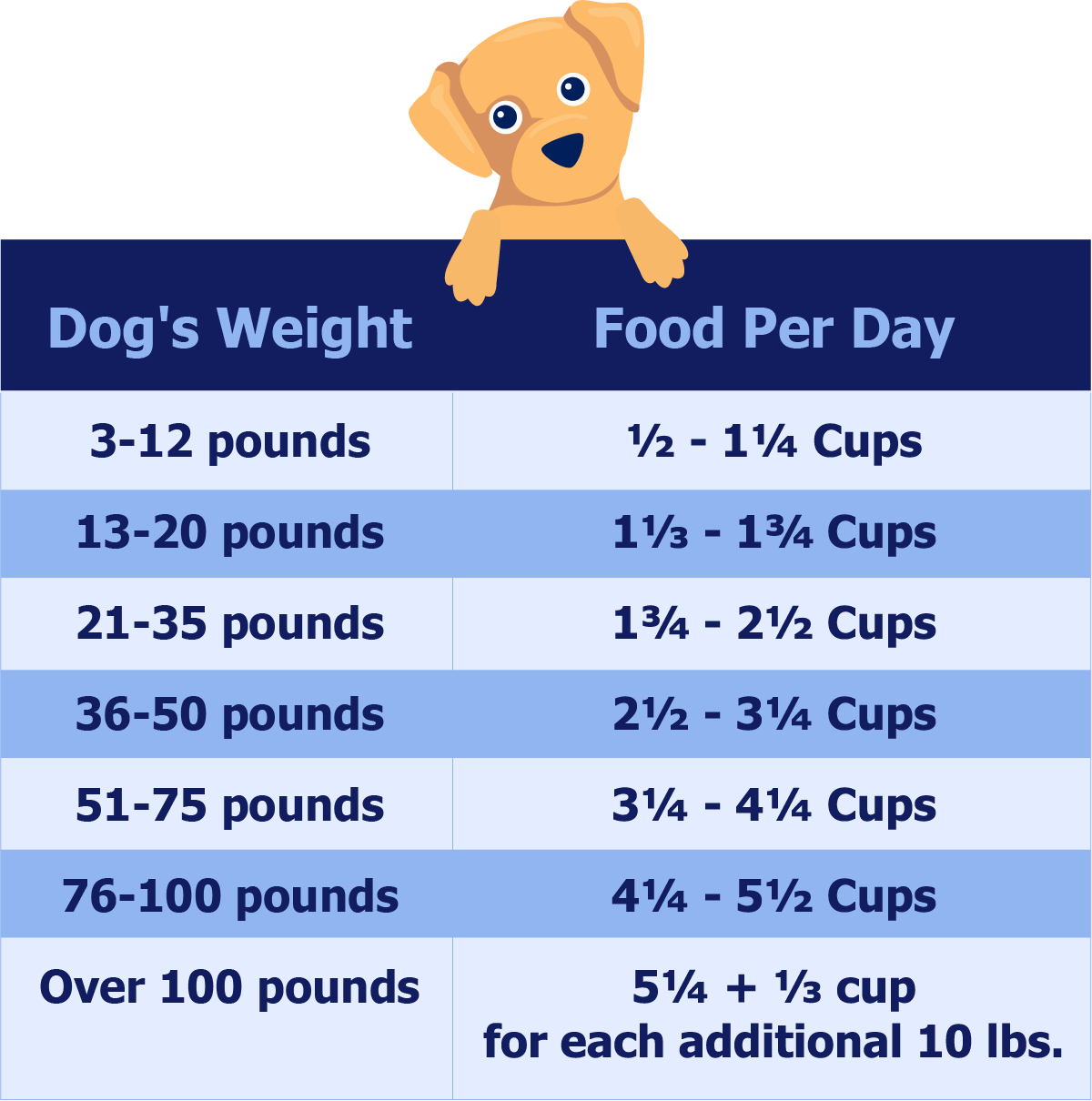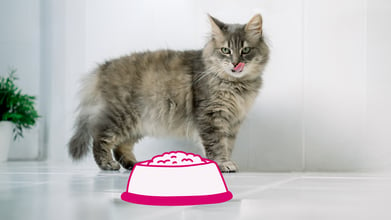How to Read Pet Food Labels
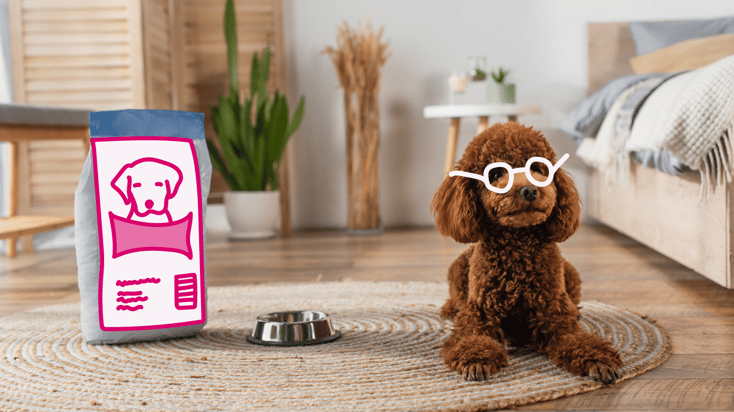
Looking at the rows and rows of pet food choices, do you know which ingredients are best for your pet? We see terms like “grain-free,” “all-natural,” and “high protein,” but what do they all mean? As pet parents, we all want to feed our pets the highest-quality food possible, chock full of the nutrients they need.
Key Takeaways:
- Pet foods are regulated by the FDA for safety, and by the Association of American Feed Control Officials (AAFCO) who monitors compliance.
- Pet food labels are required to include certain information.
- Ingredients must be approved, considered safe, and listed by weight.
- Guaranteed analysis shows a minimum amount of protein, fat, fiber, and moisture.
Looking for guidance on how much to feed your pet each day?
Choosing your pet’s food is an important decision, but it can be a confusing one as well. Read on for help deciphering pet food labels, as an educated pet parent is an empowered pet parent!
Label Standards
Pet foods are regulated by the FDA for safety, and by the Association of American Feed Officials (AAFCO) who monitor adherence to established regulations.
Every food has a nutritional adequacy statement, which lists the life stage or stages the pet food product is made for. A food listed as “complete and balanced” is considered nutritionally adequate as a stand-alone diet.
Those labeled, “for all life stages” must meet the requirements for growth, gestation, etc., while other foods may be labeled for specific life stages only.
Products that are not intended to support a complete, balanced diet will be labeled as “treats,” “snacks,” or will display the statement, “This product is intended for supplemental or intermittent feeding only.”
Check a pet food label for the AAFCO logo and read the nutritional adequacy statement as first steps in the decision-making process.

Minimum Requirements of a Pet Food Label
The first part of understanding how to read a pet food label is knowing what information needs to be included.
Each package of pet food you pick up at the store should list:
- Quantity
- Manufacturer’s Name and Address
- Guaranteed Analysis (GA)
- Ingredients, listed by weight
- Nutritional Adequacy Statement
- Feeding Directions
- Use-by and sell-by dates
- Caloric information
Quantity
This describes the actual weight – physical or liquid in the pet food package. This helps to determine the product’s cost per meal.
Manufacturer Name and Address
The contact information for the company responsible for the product is on the label. This allows pet parents to reach out if they have questions or concerns.
Guaranteed Analysis
All pet food brands are required to display Guaranteed Analysis (GA) information on the label.
The GA contains information on four key components:
- Crude protein
- Crude fat
- Crude fiber
- Moisture
Additional nutrients must also be listed in the GA if the pet food advertises certain health benefits, such as essential fatty acids or calcium.
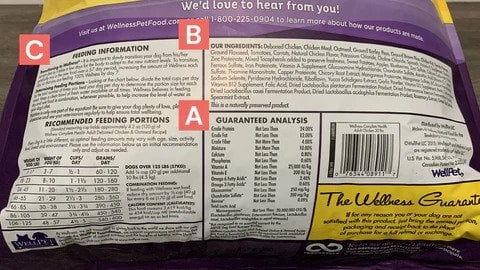
Ingredients
According to AAFCO standards, pet food ingredients are listed in descending order of weight. Water content is included, which means that meats and vegetables are often listed first, though this doesn’t always represent their nutritional contributions to the diet.
AAFCO defines the use of certain ingredients, such as “by-products,” which include only safe, edible components. Generally speaking, the ingredient list is not the best way to evaluate a food: we recommend focusing on AAFCO labeling, guaranteed analysis, and some of the other topics we’re covering here.
🐶 Dog Food Ingredients to Look Out For
🐱 Cat Food Ingredients to Keep an Eye On
Nutritional Adequacy Statement
This is important if looking to feed for a certain life stage such as a puppy, kitten, or adult. The company must prove that their pet food meets the AAFCO minimum nutritional standards and that their food is complete and balanced for the requirements of that life stage.
AAFCO has requirements for growth (puppy or kitten), maintenance (adult), gestation, and a broad category for ‘all life stages’.
Senior diets don’t have a separate AAFCO standard, so always check with a veterinarian before buying a product labeled for seniors as it’s important to find a diet that reflects their changing needs.
Feeding Directions
Usually listed as a table, this is a guideline as to how much in grams or cups to feed your pet in relation to their size.
Remember, these feeding directions are guidelines, and you need to adjust the amount you feed your pet to take into consideration their individual needs. Your pet may need more or less food depending on their age and activity levels – check with your veterinarian if you are unsure.
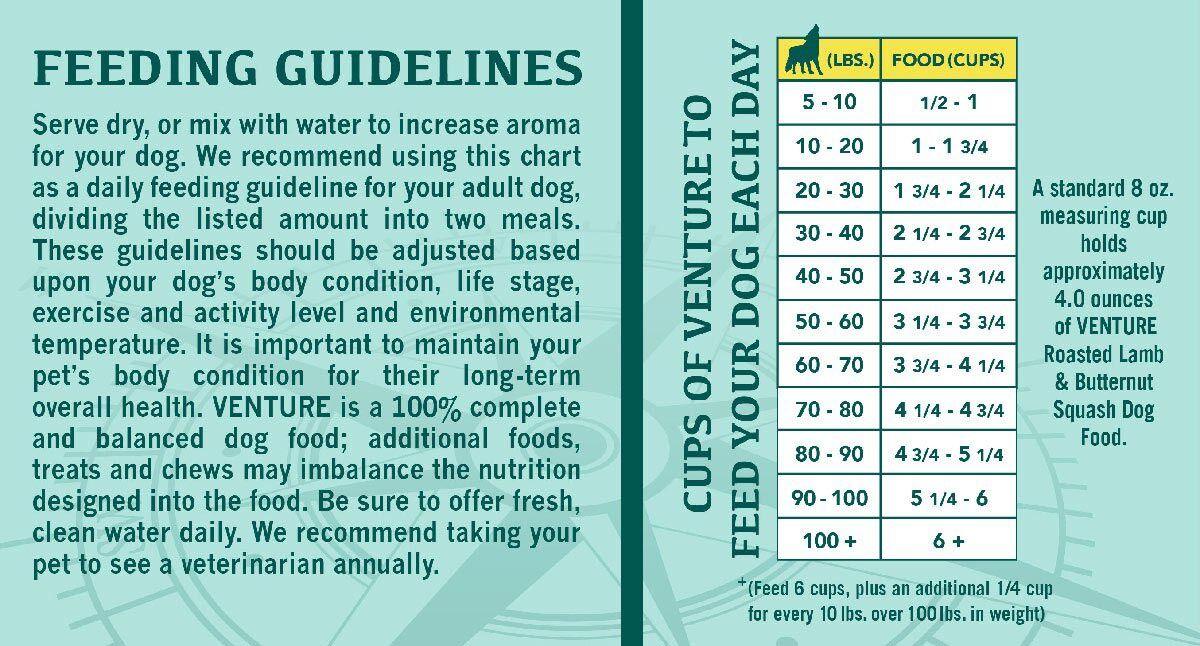
Use-by and Sell-by Dates
Sell-by dates are usually meant for retailers. Make sure you go by the use-by date so that your pet can safely eat the contents of the entire package before it expires.
Caloric information
Pet food labels should also include a calorie statement. It may be in calories per kg or calories per cup/can. Once you know your pet’s calorie requirements, you can use this information to figure out approximately how much to feed your pet.
Other Terms
It’s important to mention a few terms you may see that do not have technical definitions. Words like “natural,” “organic”, “premium,” “or “gourmet” are not defined by AAFCO, and therefore do not require that certain guidelines be met.
These are marketing tactics on behalf of the food companies, although their presence does not mean that a food is bad. The company is just advertising its product.
How Much Should I Feed My Pet?
View Results
How Much Should I Feed My Pet?
For guidance on your pet’s nutrition and optimal weight, schedule a home or virtual vet visit.
For guidance on your pet’s nutrition and optimal weight, schedule a home or virtual vet visit.
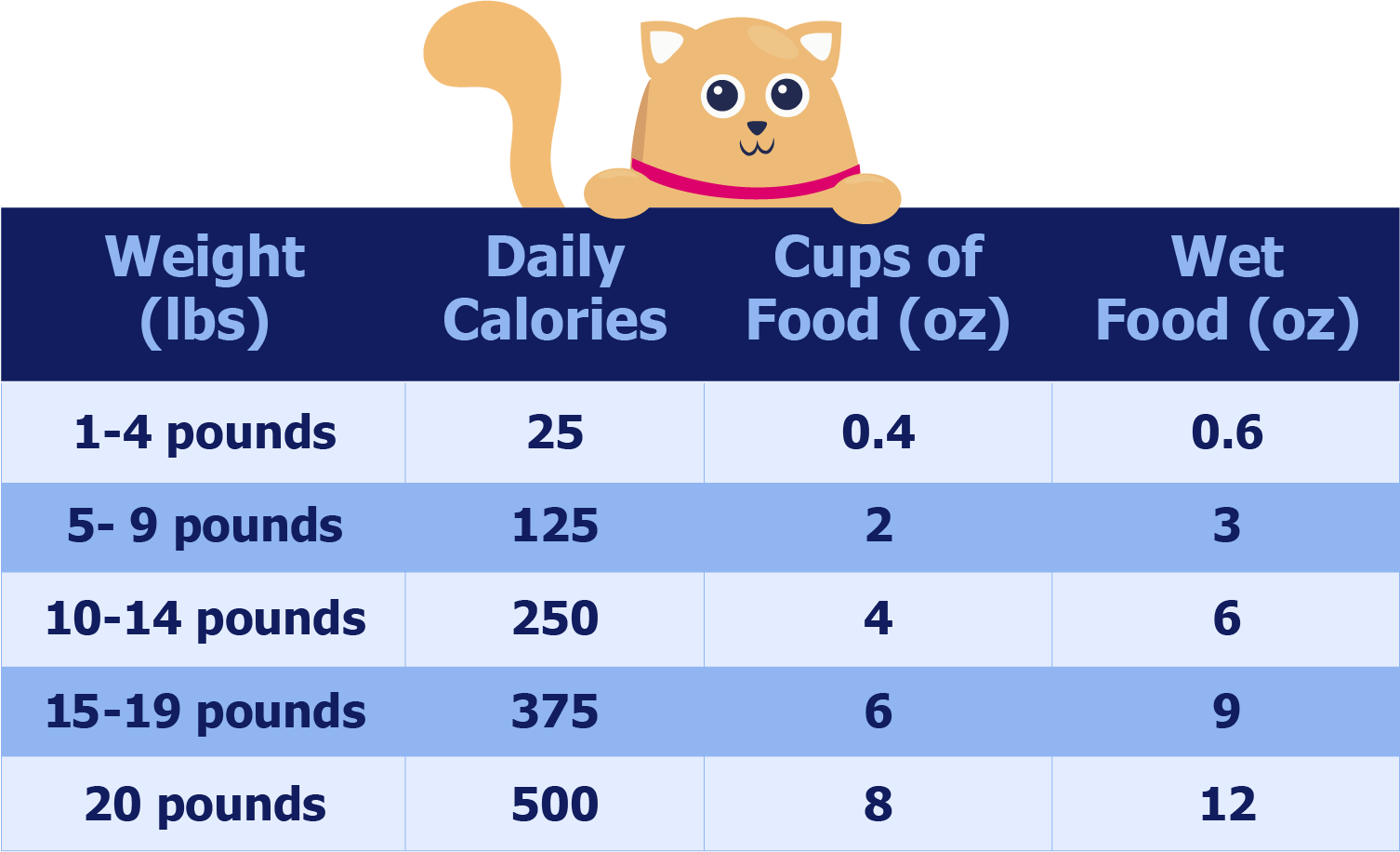
Share Quiz
Conclusion
Choosing a pet food can be a complicated decision, but we are here to help you become a more empowered pet parent. Your BetterVet veterinarian will be more than happy to go over your pet’s food label with you in detail, and make additional nutritional recommendations for your dog or cat.
Frequently Asked Questions
What if the pet food doesn’t have a food label?
Don’t buy it! A pet food that cannot provide information about the ingredients or use-by dates is not a recommended food to buy. Food labels exist to inform pet parents that they follow AAFCO standards and are therefore safe and nutritious to feed to your dog or cat.
My pet has food allergies, can I trust the food label 100%?
Food allergies in pets can be serious. If a food label has no chicken in the ingredient list you can be confident there is no chicken in the food. But, the food may have been prepared in the same factory as another brand so it could contain traces of chicken. This may be enough to trigger an allergic reaction. Call the customer helpline on the packaging to check their packaging processes.
Can I feed pet food past its expiration date?
No, you should not feed food to your pet of any kind - wet, dry, or treats, once it is past its expiration date. Even if it smells fine, it can still be spoiled on the inside and make your pet very sick.
What are byproducts in pet food?
Byproducts are animal parts that we would not necessarily consider eating as humans, like the brain, blood, bones, or organs like the intestines. These are still nutrient-dense and safe to include in regulated, commercial pet food.
What percentage of cat food should be protein?
Adult cats require more protein in their diet than dogs. While your cat’s exact protein requirement may vary based on age and activity level, cat food should generally include a minimum of 26% protein. If you're not sure what food is best for you for your cat, consult your veterinarian.
What percentage of dog food should be protein?
Adult dog food should contain a minimum of 18% crude protein. Puppy food and food for pregnant and nursing dogs should contain a higher amount - a minimum of 22.5% protein. For dogs with a high activity level, even more protein is usually recommended, but your veterinarian can advise you best.



